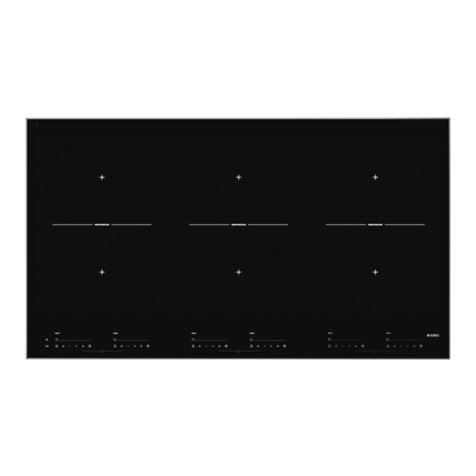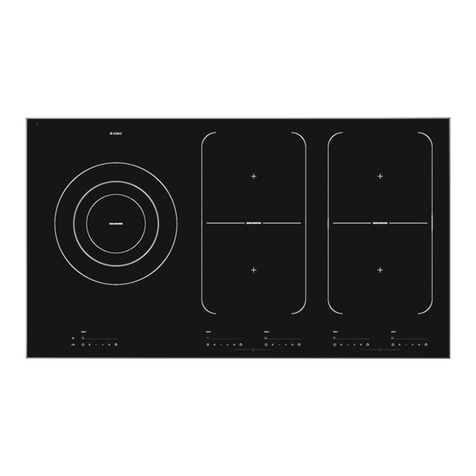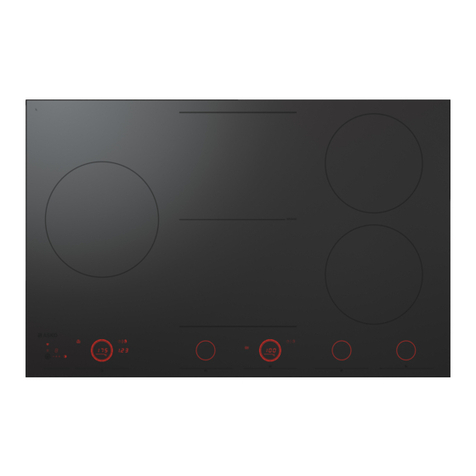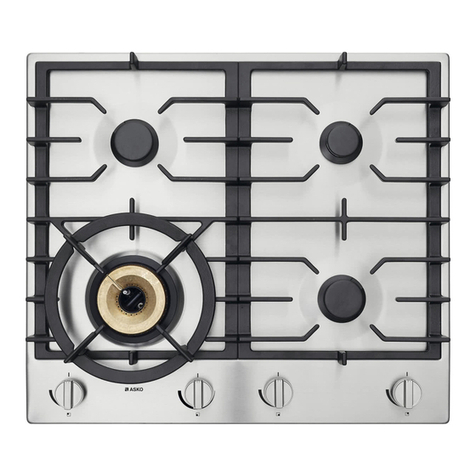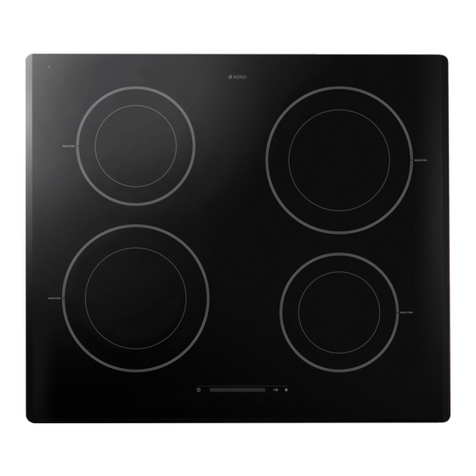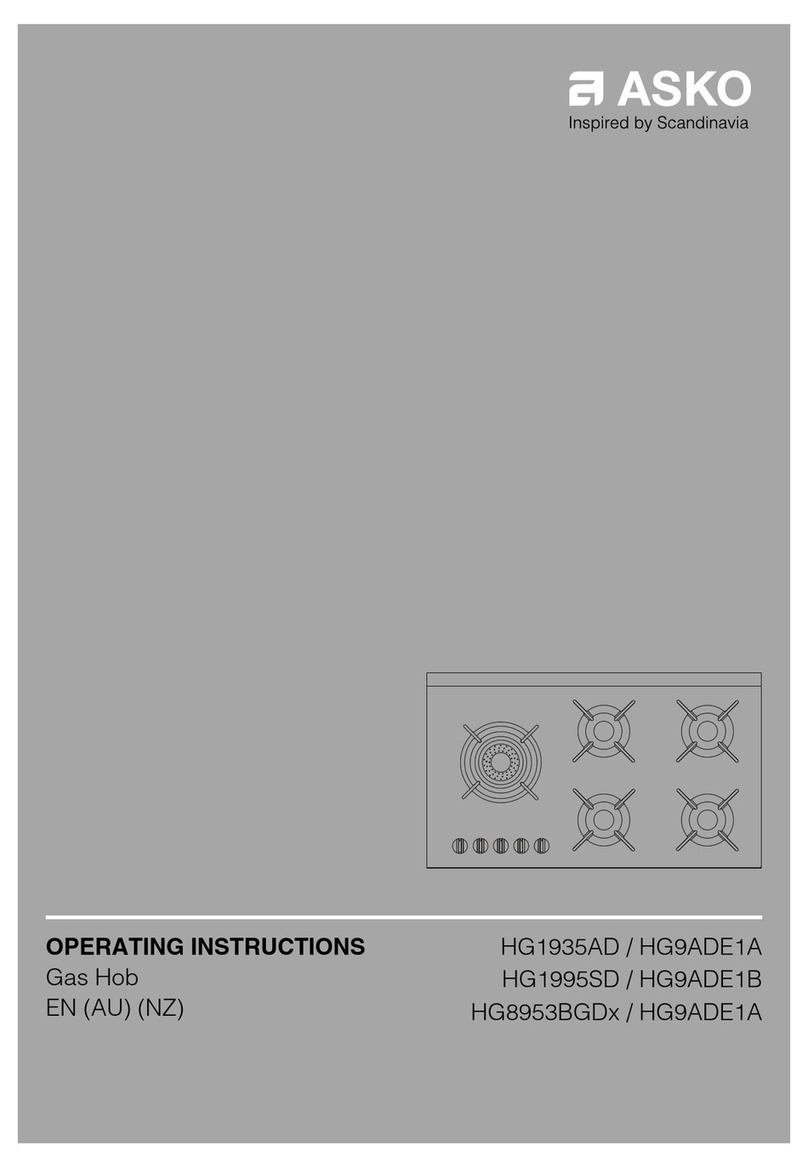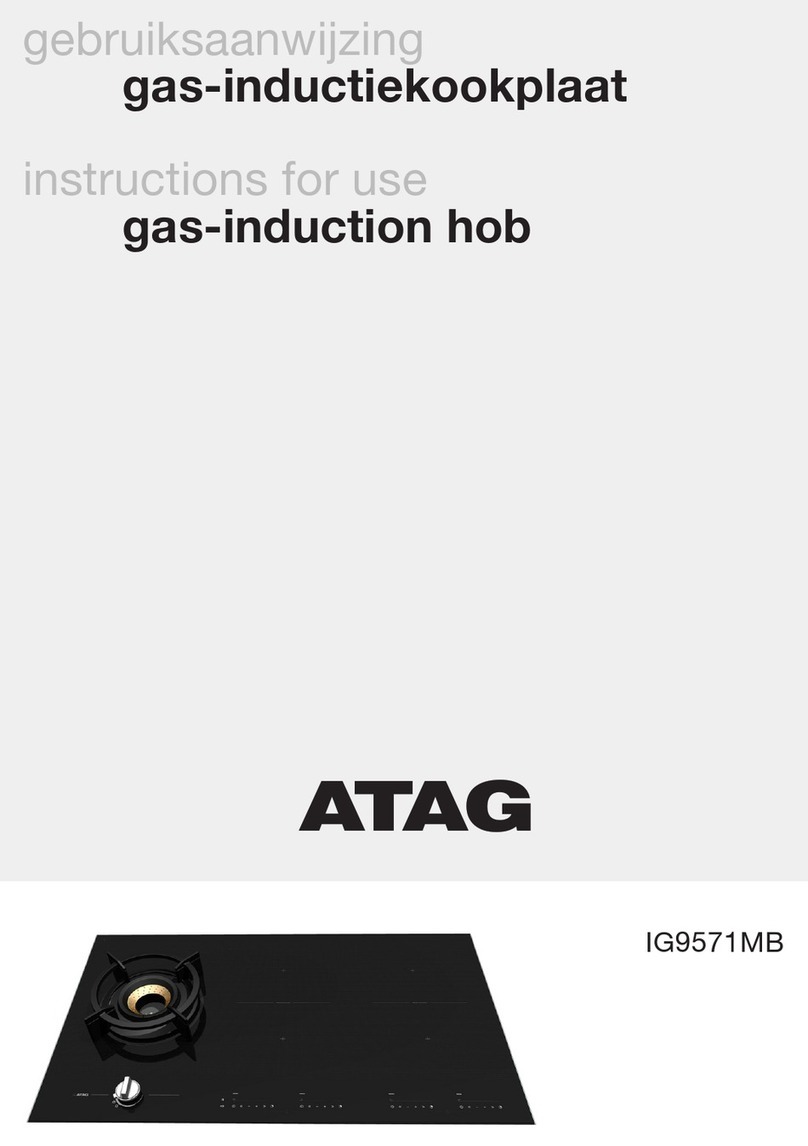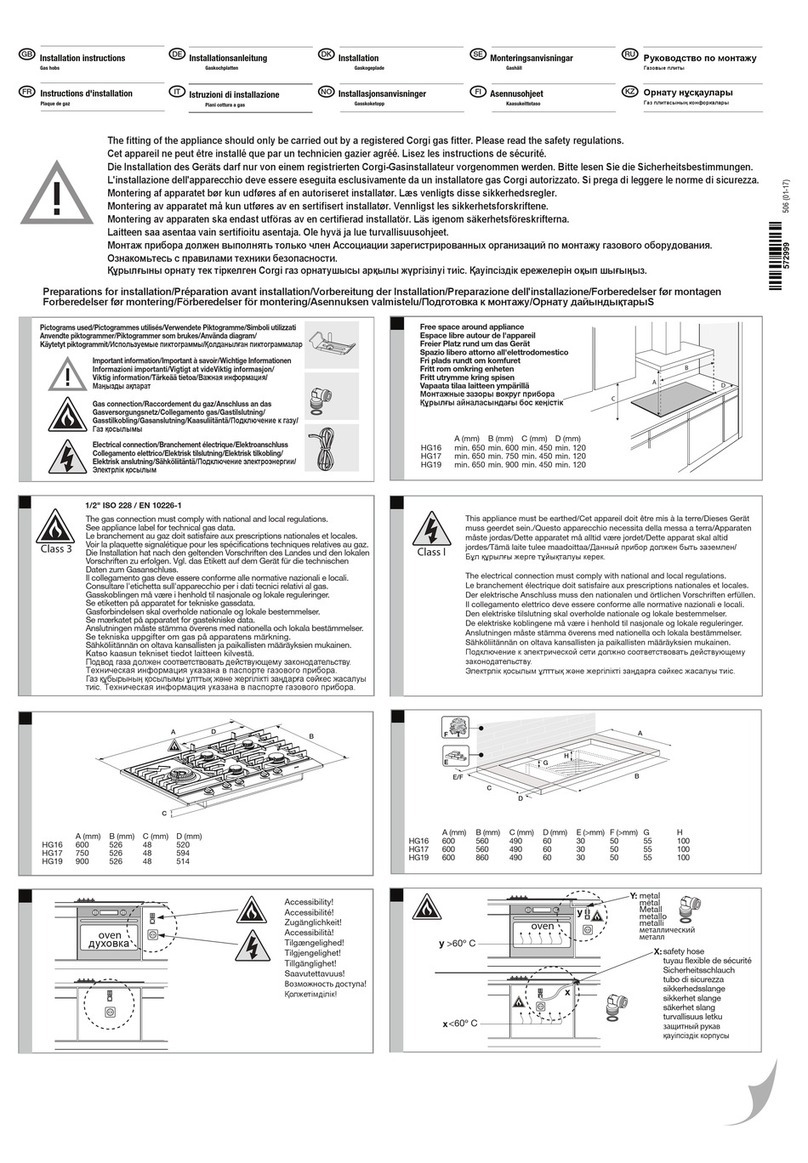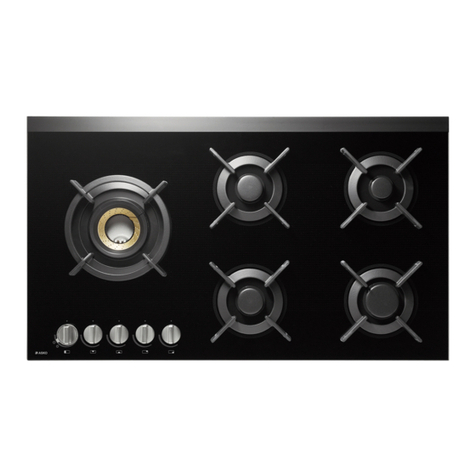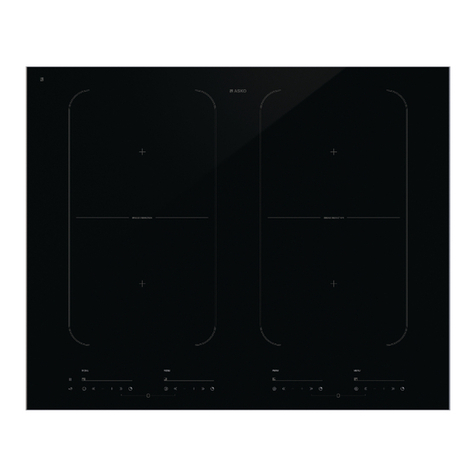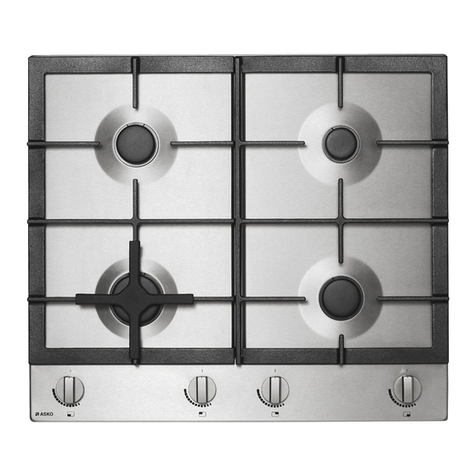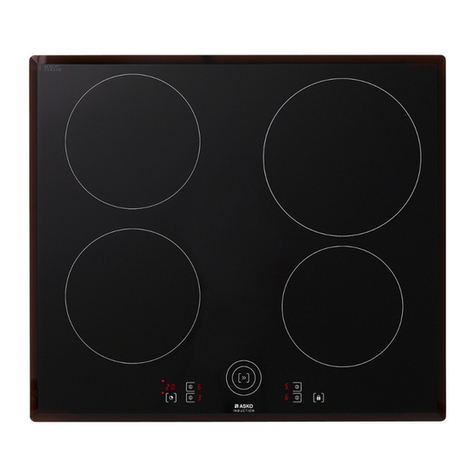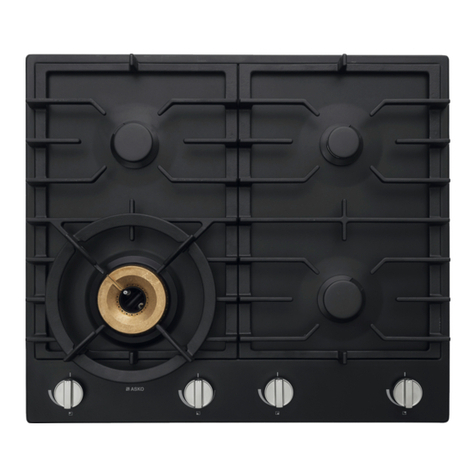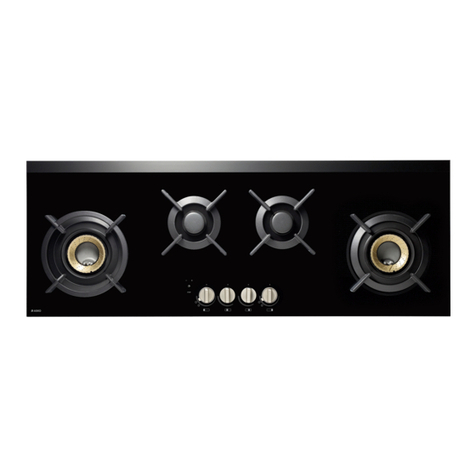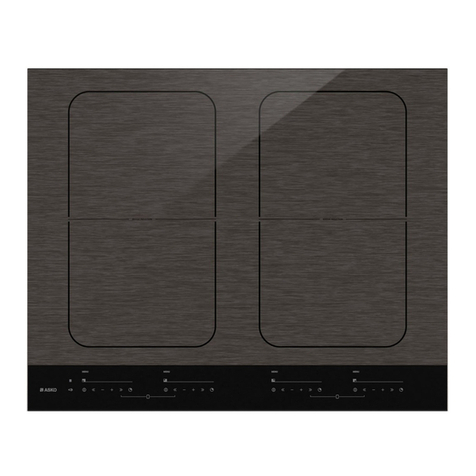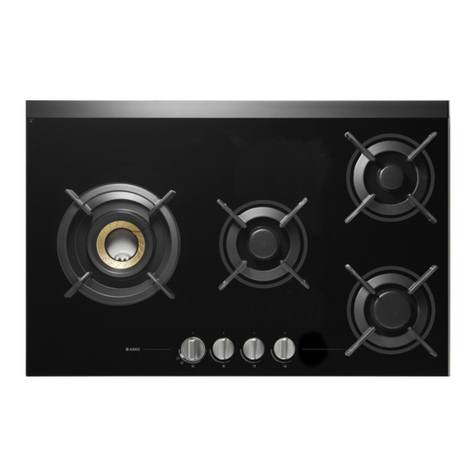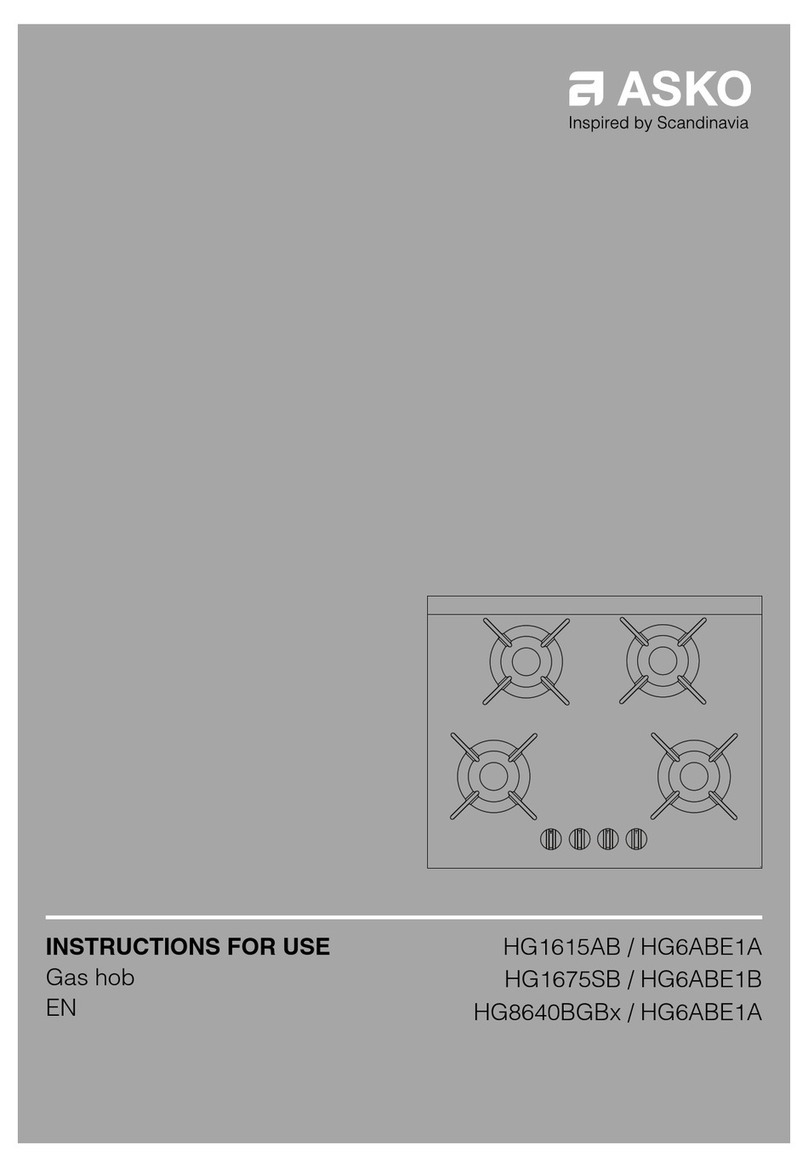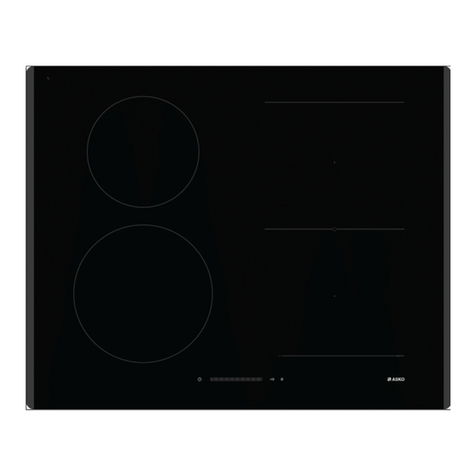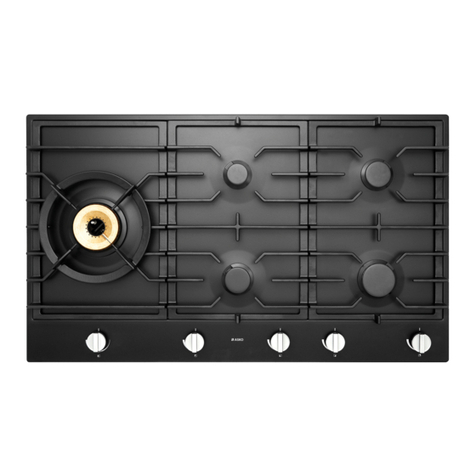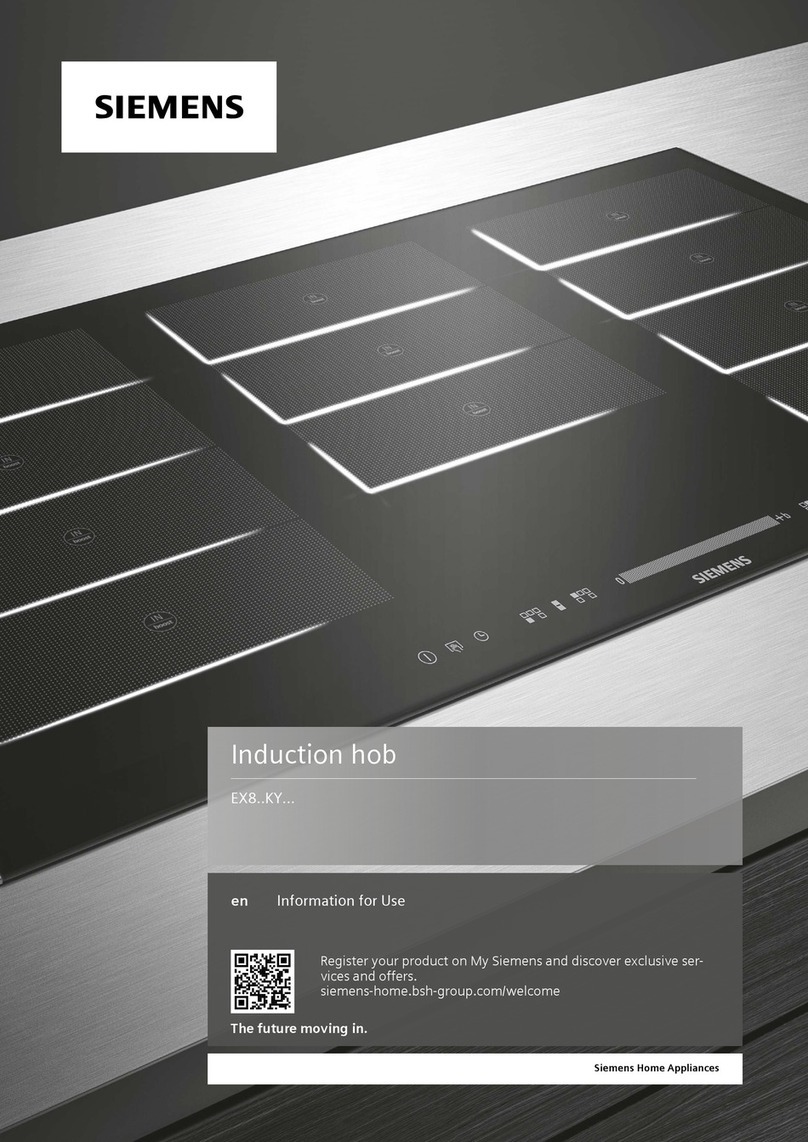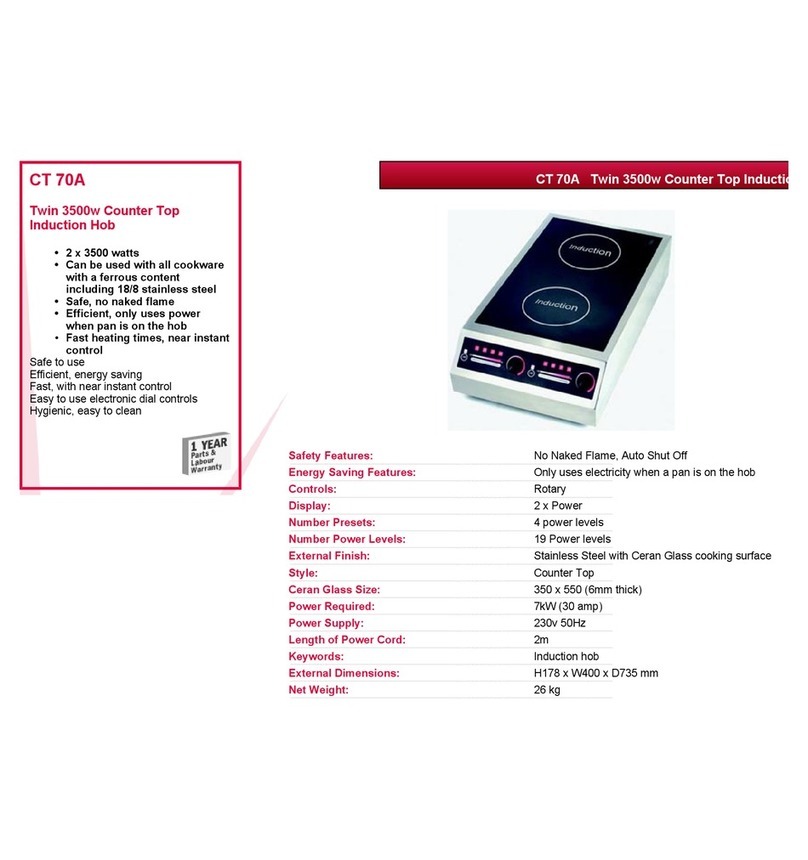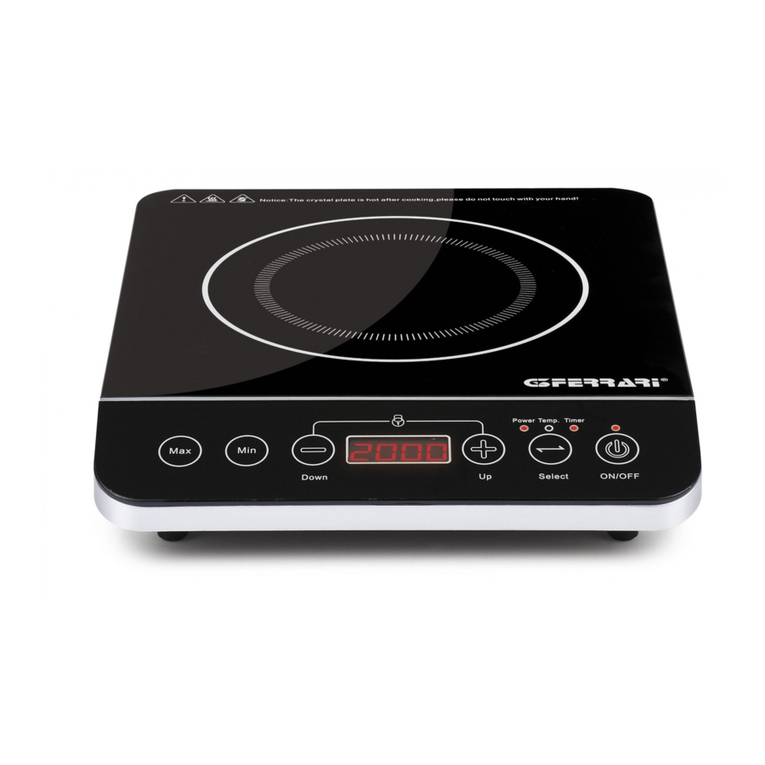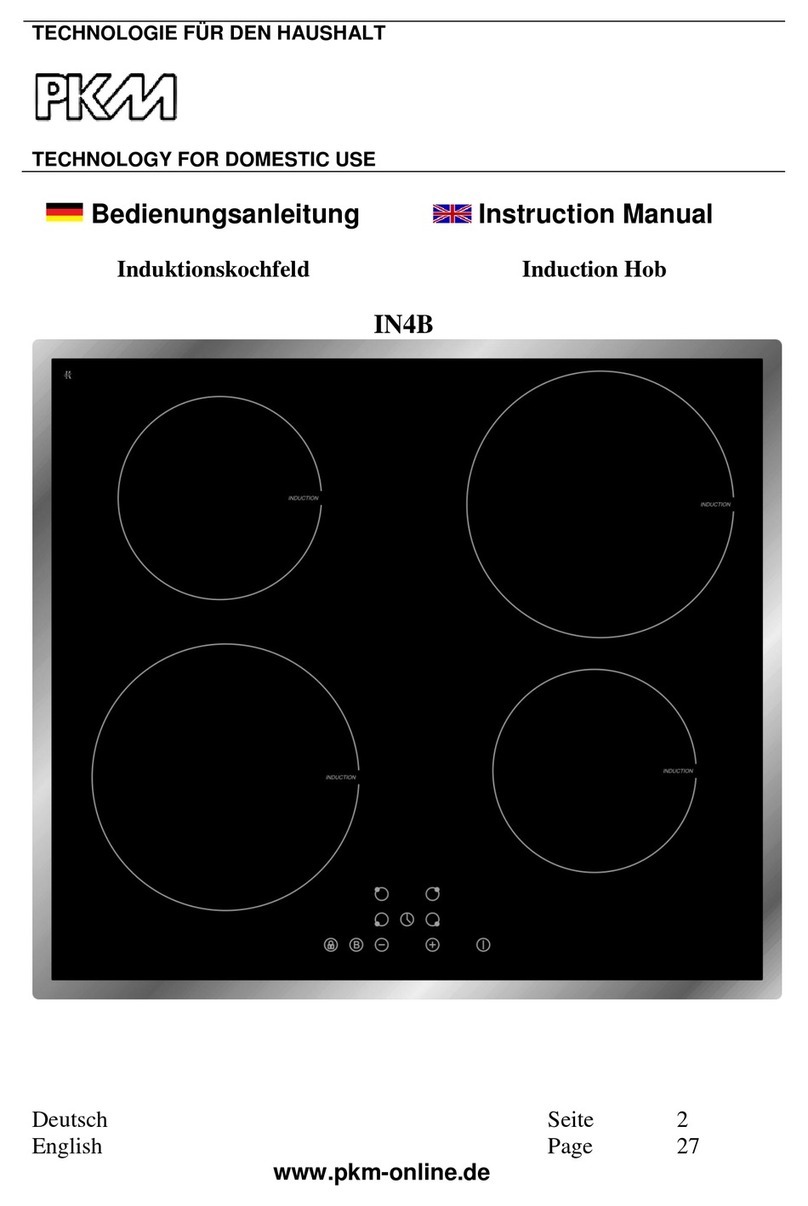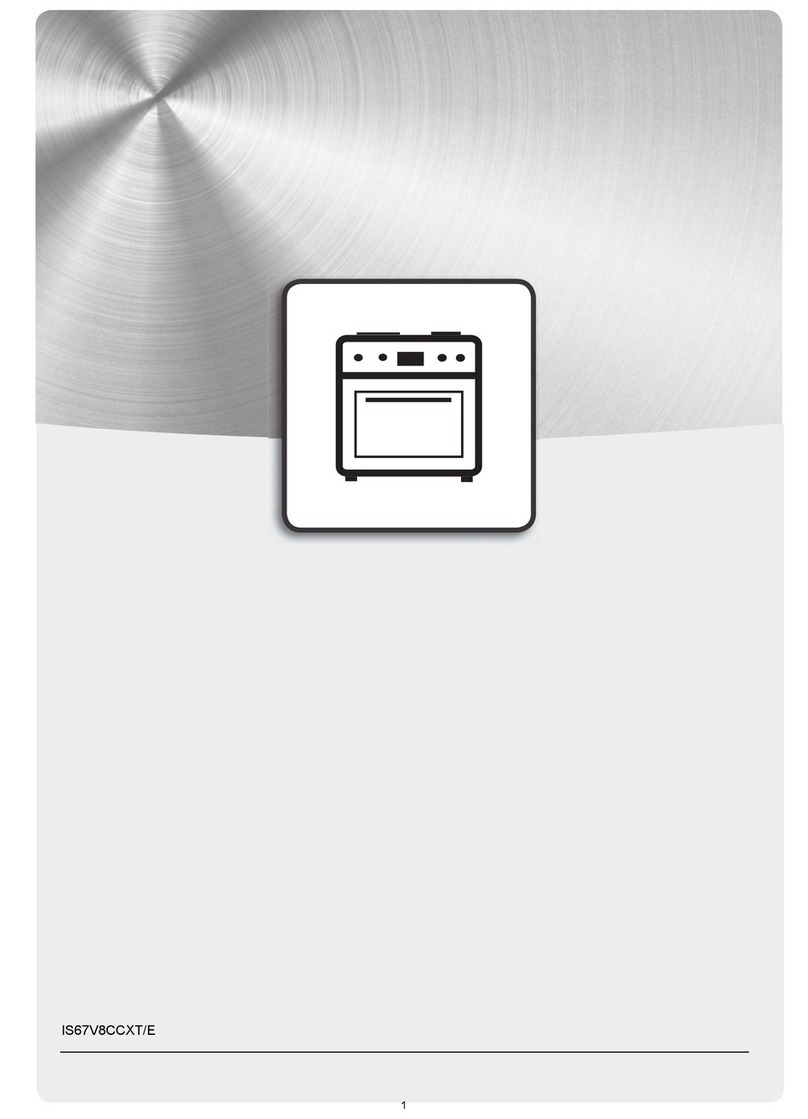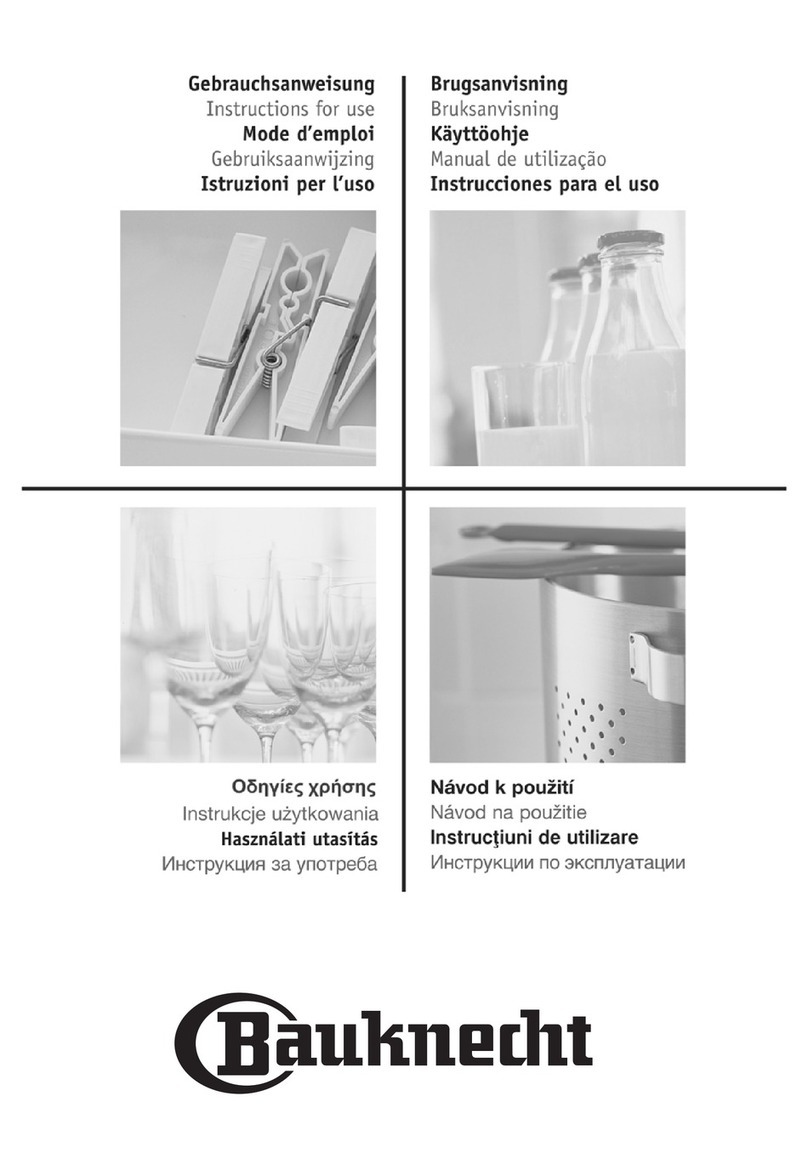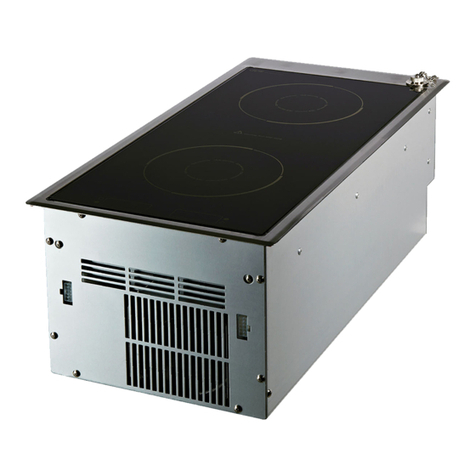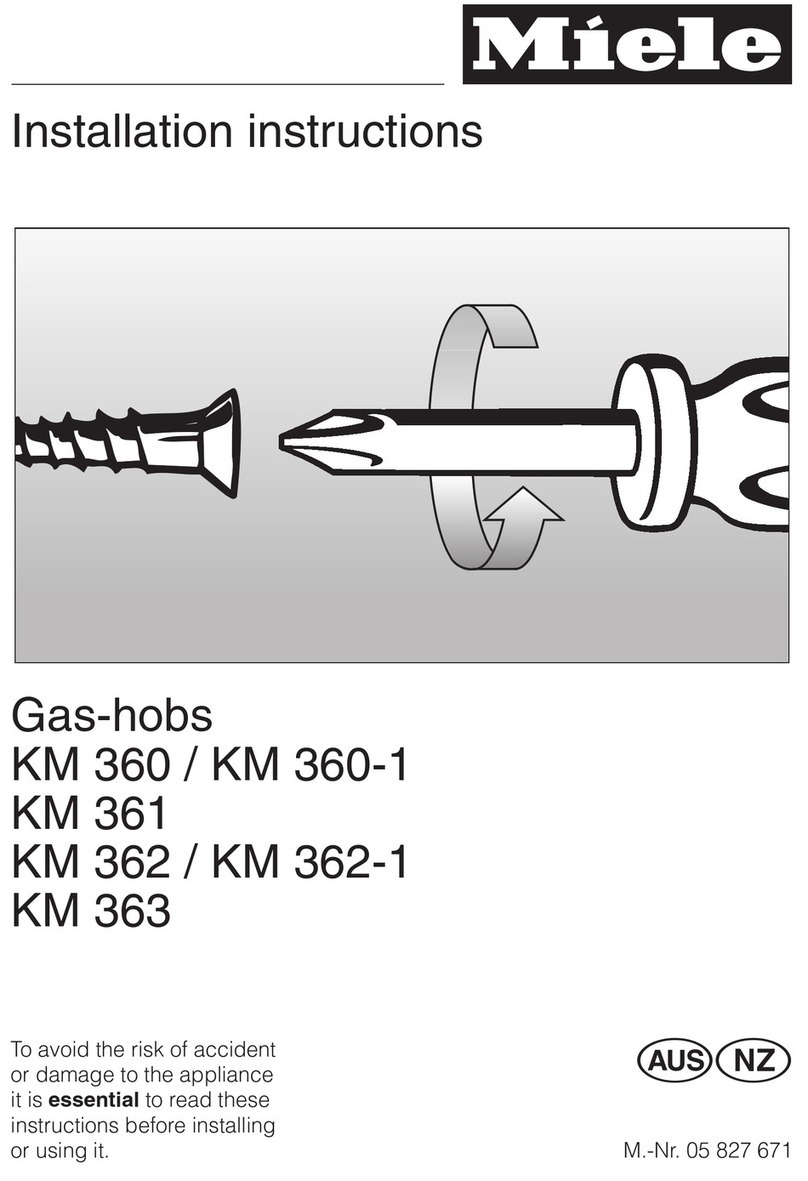
What you should pay attention to
• The teppan yaki has been fitted with a maximum temperature
limitation. This ensures that the grill plate cannot become too hot.
Yet, as with any appliance, there are a number of matters that you
should pay attention to.
During use
• This teppan yaki has been designed for household use. Only use it
for cooking food.
• When you first heat up the teppan yaki, you may experience a smell
of newness. This is normal. Ventilation will make the smell go away.
• Do not place any plastic objects or objects with a plastic grip on
the grill plate.
• Do not use the grill plate as a carving board. This could damage
your knives and the grill plate.
• Never hit the grill plate with a spatula or the tip of a knife. It could
scratch and damage the plate.
• Do not leave your teppan yaki after switching on a zone.
• Make sure that your kitchen is adequately ventilated during use.
Keep natural ventilation openings open.
• Maintain a distance of several centimetres between the bottom of
the teppan yaki and the contents of a possible drawer.
• The teppan yaki heats up during use and will remain so for a while
after switching off. Keep young children and pets away from the
teppan yaki during and directly after use.
• Fat and oil are combustible when overheated. Never try to
extinguish burning oil with water. Instead, cover the teppan yaki
immediately with a wet cloth and switch the appliance off.
• Never flambé underneath the extractor hood. The high flames may
cause a fire, even with the extractor hood switched off.
• Never use a pressure cleaner or a steam cleaner to clean the
teppan yaki. This could cause a short circuit.
• This appliance is not intended for use by persons (including
children) with reduced physical, sensory or mental capabilities, or
lack of experience and knowledge, unless they have been given
supervision or instruction concerning use of the appliance by a
person responsible for their safety.
• Never let children play with this device. Children are not to be
allowed near the device unsupervised.
SAFETY
6
